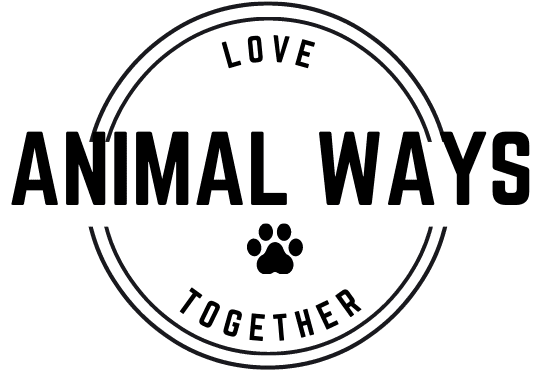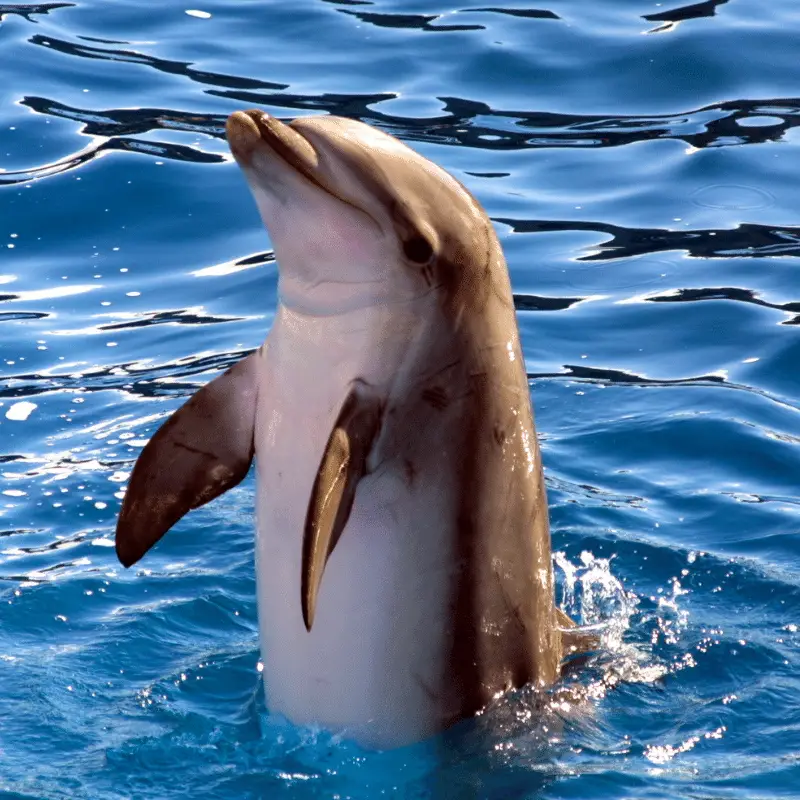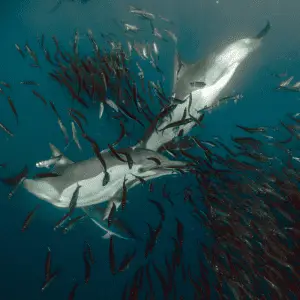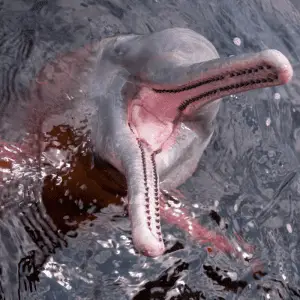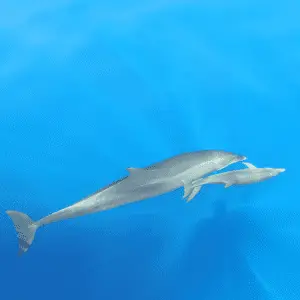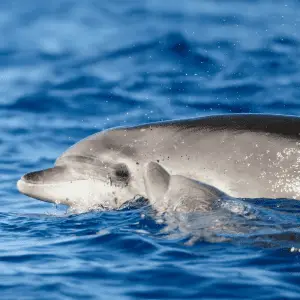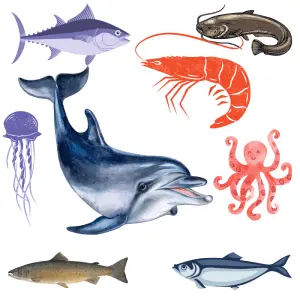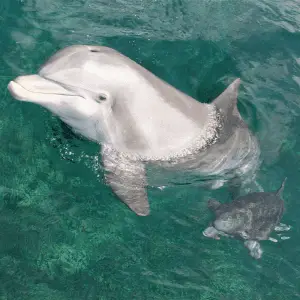You can not milk a dolphin in the traditional sense. However, milk can still be collected from dolphins. Even though you can technically milk all mammals, the problem with dolphins is that the mother controls the milk flow, and the nipples are hidden away in the mammary slits. This requires an entirely different technique, usually using a pump. Since dolphins are very clever and emotional, this could be seen as distressing for dolphins. Milking a dolphin is generally to test the milk for any health issues or to gather it for a motherless calf.
Do dolphins have nipples?
Yes, dolphins have nipples, but they do not have external ones. Instead, the nipples of the dolphins are tucked away in the mammary slits. When the dolphin babies want to drink milk, they go under the section of their mother’s body and poke in the area where the mammary slits are located. Upon stimulation, the nipple of the dolphin gets released for the baby dolphin to feed.
Learn More: Feeding Baby Dolphins
Evolution
There is no doubt that all terrestrial and aquatic mammals have developed in their unique ways. Over the centuries, these animals have developed exclusive mechanisms that help them survive and thrive in their particular environment.
Such as the snake, which evolved from having legs to none, as they didn’t need them anymore, or the hippos that secrete a natural sunscreen to protect them from the sun. Or the elephants with massive ears to cool down in the hot summer months. The dolphins have created a specific mechanism that helps these animals breastfeed underwater.
Breastfeeding Underwater
As dolphins are aquatic animals, they always remain surrounded by water. So, breastfeeding in this environment is not as easy for terrestrial mammals.
To combat this problem, dolphins have evolved anatomically significantly. Instead of having external nipples, the dolphins come with two mammary slits.
Each of these slits comes with an inverted nipple that stays inside. The dolphin nipples do not look similar to the nipples of terrestrial animals.
Unlike land mammals, dolphin mothers control the flow of milk. They do not have feeding nipples on show, so the baby dolphins cannot feed whenever they wish.
The baby dolphins must dive underneath their mother’s body to nudge the mammary slit area whenever they baby dolphin is ready to feed. This nudging signals to the dolphin mothers that the babies are ready for milk. This behaviour also helps to stimulate the slits, which, in turn, helps release the inverted nipples.
In the case of terrestrial mammals, the offspring determine the amount of milk they will consume at any time. However, dolphin babies do not have this opportunity.
The mother dolphin controls the lactating process entirely to ensure that no single drop of milk gets wasted. The nipples get released, and the baby dolphin wraps its mouth around the nipple and creates a U-shaped cone. Once they have completed this process, the mother then releases the milk directly into their baby’s mouth.
This vital process ensures that the precious milk is directed inside the mouth of the baby dolphin. It also ensures that no single drop of milk gets lost in the water. The mammary glands of dolphins come with a specific type of muscle that helps them contract. This contraction helps to squirt milk directly into the mouth of the dolphin babies.
In the first few weeks after giving birth to their babies, the dolphin mother swims on her side to help the babies find the nipple. But once the babies become somewhat familiar with the process and location, the mother will swim normally.
The consistency of the milk is yet another reason why the dolphins can successfully breastfeed underwater. The dolphin milk is very thick and highly concentrated. That ensures that the milk does not get dissolved around the lip area of the baby dolphins.
About Dolphin Milk
All the baby dolphins require their mother’s nutritious milk to grow and stay healthy. Generally, baby dolphins consume milk at 20 minutes intervals. That means the mother dolphin needs to remain prepared to feed its baby throughout the day.
As the baby dolphins get older, the frequency of feeding reduces significantly. Even though most dolphin babies get weaned by two to three years, there is evidence that the mother dolphin has kept on nursing their baby for more than ten years after their birth.
The milk of the dolphin contains a high level of fat. The proportion of fat level present in the dolphins’ milk is directly proportional to the calf’s weight. Even though there are some variations in the characteristics of dolphin milk between various species, almost all dolphin milk has a strong fishy odour and a very thick consistency. It also tastes oily, and there is no sweetness. Dolphin milk has virtually no similarity with human milk. Instead, dolphin milk resembles the high-calorie milk produced by dogs, reindeer, and rabbits. Accept the lactose content of the dolphin milk to be exceptionally different from the milk of all these.
However, the content of the milk of dolphins changes over time as the baby dolphins slowly start to grow. Gradually, the dolphin milk loses its lactose content and reduces its total yield of milk as well. It is probably a process that the mother dolphins take to make their babies rely more on other food than her milk.
How long do baby dolphins stay with their mother?
The baby dolphins tend to nurse from their mother until they are 2 to 3 years old. In most cases, the dolphin babies stay with their mothers for up to 4 to 5 years after birth.
Can humans drink dolphin milk?
Humans do not drink dolphin milk, and if we drink it naturally, it will make us sick. The milk is 45% fat compared to cows’ milk at 3.5%. The fishy taste and smell alone are enough to stop any human from drinking dolphin milk.
